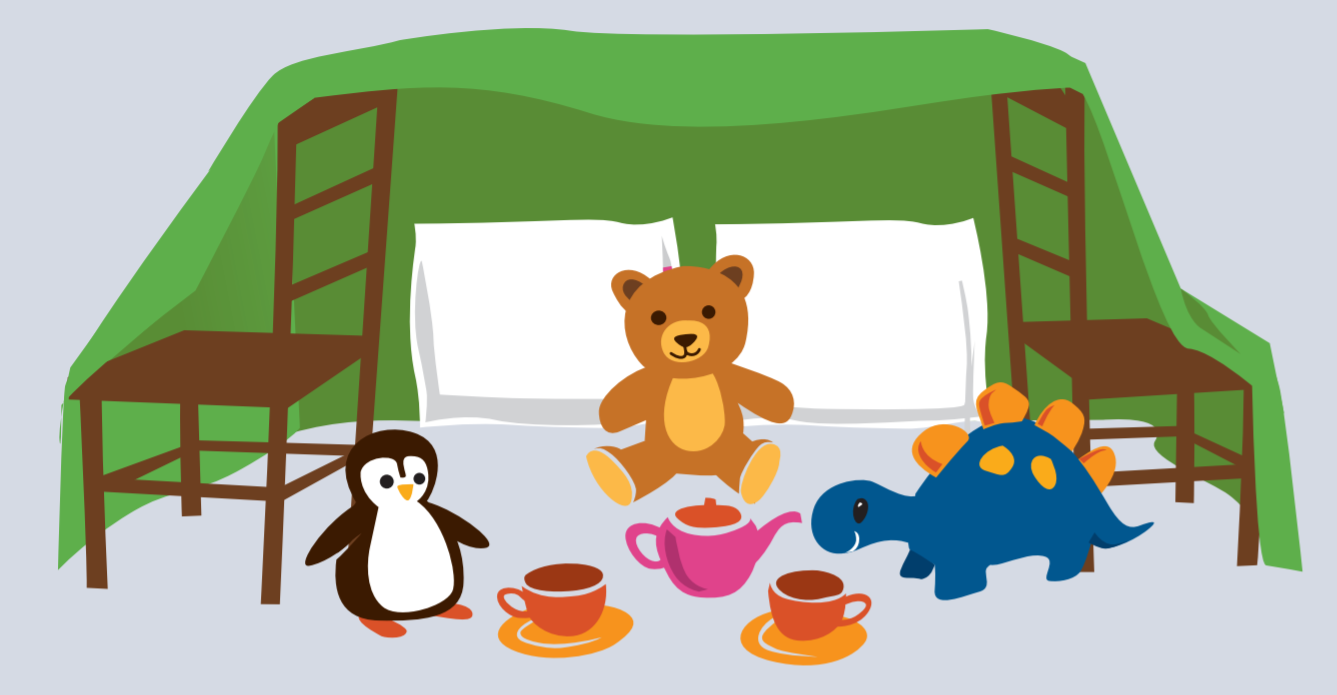I walk out into my bedroom one afternoon after sorting the kitchen post lunch and realize that all the pillows have vanished. I also could not see the sheets. I walked into the dining area and see that the chairs are gone. Something rings a bell, and I know I should walk into my kids bedroom. What I see shocks me, but yes after 5 seconds, a huge smile overcomes all my emotions and is plastered on my face. The whole room has been transformed. The bed and chairs (that have been pulled from the dining area) are now acting as pillars to hold up all the sheets. Inside this little area I see pillows thrown around, and a little lamp pulled in. Both my kids are lying down and reading books. Both of them have “designed” their corners. One side has dolls set out, and the other side has Star Wars books. 🙂

I am yet to come across an individual who has not made a small little fort of their own as a kid. Its amazing how math and science needs to be passed on from generation to generation through books, classes and lectures but this finds a way across generations. Almost like its been transferred through our DNA. Each generation manages to make it.
I recently started reading more about it. So apparently I am not the first person who has been intrigued by the children and the forts they build (surprise surprise). Apparently as a phenomenon this is being studied for a long time now. Studies have found that it is a physical, developmental and psychological need in a child to build his/her own fort. It provides a child with her own space. It helps her create something thereby instilling the feeling of independence and self reliance. It also gives them a sense of freedom and lays the foundation of decision making skill development.
In todays times such forts are even more important. With Covid-19 imprisoning us in our homes the children feel the need for their own space. They need an area away from the authority of adults. They need the walls to demarcate themselves in the now often overcrowded house. The fact that the walls are made of cloth and thus flimsy does not take away the fact that they do provide a division from the outer world. The outer world is often a place that the child has no or little control over. Its what lies inside these fort walls that the child can structure and move as they want. It also thus provides them with a sense of power.

In recent times many parents have reported that their children have built forts and ask parents to let them be. Mental health workers all over the world are requesting parents to not destroy or break (read fold away) such forts. They are performing many functions in making our little warriors fight and win the battles they are faced in todays times.
Think back of the times when we were children and how much fun these forts and the games we played inside them was. Thus irrespective of your child age please let them build forts. Let their forts stay. And enjoy as this is a symbol that your child is growing and learning to manage the world around himself/herself.
To the memory of the fort I used to build under my dining table in our home in Delhi.